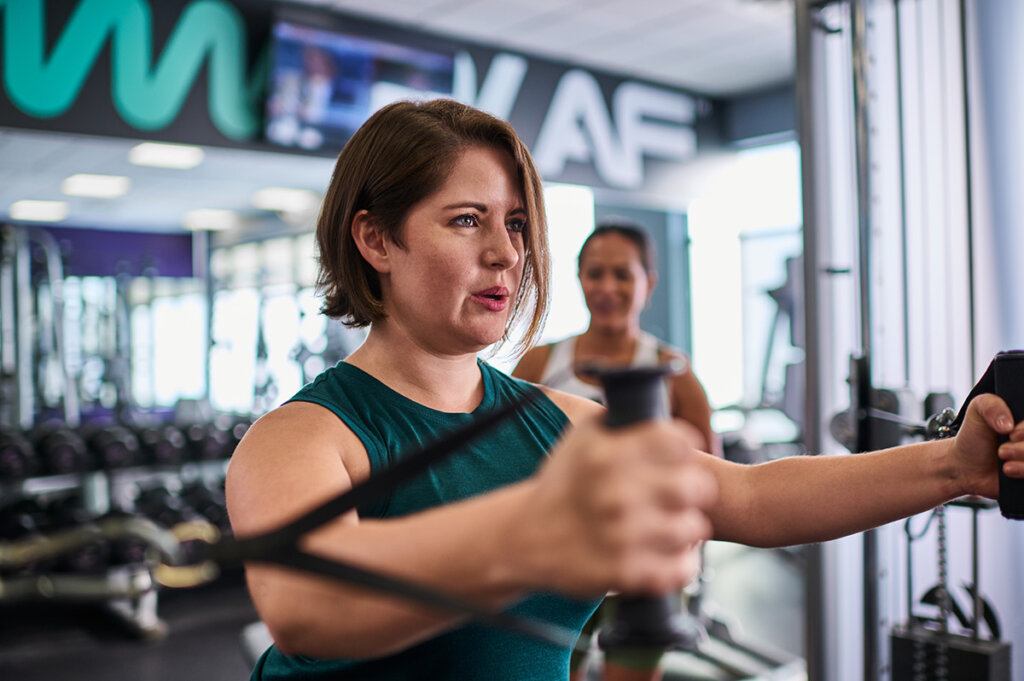We’ll be the first to admit: that rush you get after a great workout is hard to beat. Whether you’re training for a marathon or completing a killer strength training session, the mental health benefits of consistent exercise are often just as rewarding as the physical ones. But as with all things in life, there can be too much of a good thing — including workouts.
When you over-exercise or overtrain without allowing your body enough recovery time, you run the risk of developing overtraining syndrome (OTS). But just what is overtraining syndrome — and what does it do to your body? Let’s unpack the causes and signs of OTS, plus how to recover and get back to a more balanced approach to exercise.
What is overtraining syndrome?
Overtraining syndrome is a condition caused by exercising too frequently or intensely without enough time for recovery. If you have OTS, you might experience a fitness plateau, finding that you’ve stopped making progress with your workouts or that they feel exceedingly hard.
It’s important to note that OTS involves more than just feeling sore or tired the day after an extra intense workout. It typically causes physical and mental symptoms that interfere with your daily life — and recovery can take weeks or months, depending on the severity. While OTS can happen to anyone who trains too frequently or intensely without enough recovery, it often affects athletes or people training for competitive sporting events like swimming, cycling, or running.

Signs of overtraining
One of the biggest signs of overtraining is a decrease in performance and endurance, but there are other symptoms that might not seem as obvious.
If you’ve been hitting those two-a-day workouts or training extra hard for a competitive event, watch out for the following overtraining symptoms:
- Persistent fatigue. People dealing with overtraining syndrome are likely to experience chronic fatigue, especially at night or right after a workout.
- Getting sick more often. Reduced immune function is a lesser-known sign of overtraining; so watch out if you’ve been coming down with more frequent colds or illnesses.
- Digestive issues. Research suggests overtraining may damage the cells in your intestines, leading to stomach issues like nausea and diarrhea.
- Insomnia or other sleep disturbances. Elevated cortisol levels from overtraining may make it harder to fall and stay asleep.
- Mood changes. Sudden depression, anxiety, or irritability may all be signs of overtraining syndrome.
- Elevated heart rate and blood pressure. Studies show that overtraining can have a negative impact on your nervous system.
Because overtraining symptoms overlap with many other health conditions, it’s best to consult with your doctor about any new or worsening symptoms.
Complications of overtraining
Most often, overtraining can be corrected with rest, recovery, and other strategies discussed below. But sometimes, if left untreated, it may lead to other health complications.
One complication from overtraining is a condition called rhabdomyolysis, also referred to as “rhabdo.” This happens when muscle tissue starts to break down and release proteins into the kidneys. Key symptoms of rhabdo include intense muscle aches, dark urine, and having decreased or no urine output. If you’re experiencing any of these overtraining symptoms, be sure to speak with your doctor.
How is overtraining diagnosed?
Overtraining syndrome is often a “diagnosis of exclusion.” This means that while it’s a very real condition, doctors may look for other potential causes of your symptoms before diagnosing you with OTS. To understand whether or not you’re suffering from OTS, your doctor might perform a few routine tests such as:
- Blood tests that can show elevated levels of enzymes in your blood like uric acid. High uric acid levels may indicate muscle damage.
- Urine tests to check your kidney function. Elevated levels of cortisol in your urine can also indicate OTS.
- EKG to test heart function and cardiovascular activity if you’re experiencing an elevated heart rate.
Recovery from overtraining: How long does it take?
If you’re wondering how to recover from overtraining, the answer is simple: rest. Take a break from your training so that your body can heal. Your recovery time will depend on how severe your symptoms were, though most recovery from OTS takes between four and 12 weeks.
Other than taking a break from exercise, you can support your body’s healing process in the following ways:
- Prioritize a good night’s rest. You can help your muscle tissue repair faster — and you’ll likely feel better — by focusing on getting enough shut-eye each night.
- Stay hydrated. Hydration is crucial for injury prevention and muscle recovery, especially for athletes training for competitive sports.
- Fuel your body with healthy food. Eat a balanced diet full of plenty of fruits and veggies, whole grains, lean proteins, and healthy fats. After a workout, be sure to eat foods that boost muscle recovery and help your body repair.
- Switch to low-intensity movement. Though you’re putting the pause on sweat-inducing workouts, you can likely still incorporate walking, gentle yoga, or other low-intensity movements into your recovery plan. Plus, these are wonderful things to continue with when you’re fully recovered and creating a new, more balanced fitness plan.
That brings us to post-recovery! Once you get back on your feet after recovering from overtraining, you might be wondering how to approach exercise again. It’s important to consider how many rest days you should take per week, and whether or not you should swear off two-a-day workouts for good.

How many rest days should I take per week?
Experts typically recommend one to three rest days each week depending on your fitness level and goals. Once you’ve recovered from overtraining, approach your new fitness routine with this in mind. And remember, a rest day can still include lower-intensity options like walking or yoga — you just shouldn’t push your body to the max seven days a week.
Should you work out twice a day?
The answer to “should you work out twice a day” depends on the intensity of your workouts, in addition to your fitness goals and overall health. Consider these factors when weighing whether or not you should try for a “two-a-day.”
- Your specific fitness goals. Competitive athletes who are training for specific events may be required to double up on workouts on certain days, but they also know that without enough recovery time built in, their performance may suffer.
- Your overall health. If you have underlying health conditions, be sure to speak with your doctor about your fitness plans and whether or not doubling up on workouts is a good idea.
- The intensity of your workouts. If you hit it hard at a HIIT cardio class or strength training session in the morning and take a yoga class in the afternoon, chances are you’ll be helping your body, not hurting it. This is because you’re pairing higher-intensity exercise with a lower-intensity form of exercise. But try two higher-intensity forms of exercise in one day and you may be pushing it too far.
A quick note on preventing overtraining
When it comes to how to prevent overtraining, the tried-and-true advice of listening to your body is key. Tune in to how you feel after your workouts. Yes, challenging yourself is a great way to build confidence and see results, but you shouldn’t be left feeling sick or burned out along the way. It’s crucial to build in enough rest days each week so that you still get the benefits of exercise — and don’t have to deal with the unpleasant symptoms overtraining syndrome can bring.
In addition to including enough rest days each week, take care of your body with the proper nutrition, adequate sleep, and gentler forms of exercise it needs. Trust us: Your body will thank you for taking a more balanced approach.
More training and recovery tips
Did you know our expert Anytime Fitness Coaches can give you personalized training, nutrition, and recovery guidance to help you meet your fitness goals and avoid plateaus? Team up with a Coach to get started.



